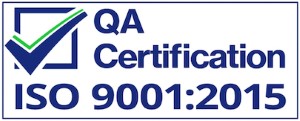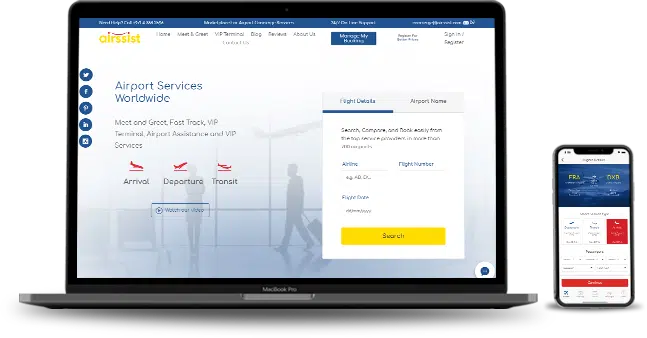Table of Contents
Financial roadshows have become an essential component of modern corporate strategy, enabling companies to connect directly with investors, stakeholders, and key decision-makers across multiple locations. Whether you’re planning an IPO, raising capital, or strengthening investor relations, understanding the intricacies of financial roadshows can make the difference between a successful campaign and a missed opportunity.
What Are Financial Roadshow Meetings?
Financial roadshow meetings are strategic business events where company executives travel to multiple cities to present their company’s financial performance, business strategy, and investment opportunities to potential and current investors. These face-to-face presentations typically occur before major financial events such as:
- Initial Public Offerings (IPOs)
- Secondary offerings
- Bond issuances
- Quarterly earnings presentations
- Strategic announcements
- Merger and acquisition activities
During these meetings, senior management teams, including CEOs, CFOs, and investor relations executives, deliver carefully crafted presentations that highlight the company’s value proposition, financial health, and growth prospects.
Types of Corporate Roadshows
Understanding the different types of financial roadshows helps companies choose the most appropriate format for their specific objectives:
1. IPO Roadshows
The most high-profile type of roadshow, typically lasting 10-15 days and covering major financial centers worldwide. Companies use these to generate investor interest and determine optimal pricing for their public offering.
2. Non-Deal Roadshows
Ongoing investor relations activities designed to maintain regular communication with the investment community, providing updates on company performance and strategic initiatives.
3. Bond Roadshows
Focused on debt issuance, these roadshows target institutional investors interested in corporate bonds and fixed-income securities.
4. Earnings Roadshows
Quarterly or annual presentations following earnings announcements, allowing management to provide detailed explanations of financial results and answer investor questions.
5. Industry Conference Roadshows
Participation in sector-specific conferences where companies present alongside industry peers to targeted investor audiences.
Key Benefits of Financial Roadshow Meetings
Enhanced Investor Relations
Direct, face-to-face interaction builds stronger relationships with current and potential investors, fostering trust and credibility that cannot be achieved through digital communications alone.
Improved Market Visibility
Roadshows significantly increase company exposure among institutional investors, analysts, and financial media, enhancing overall market awareness and potentially improving stock liquidity.
Real-Time Feedback
Executive teams receive immediate feedback on their strategy, financial performance, and market positioning, providing valuable insights for future decision-making.
Premium Valuation Opportunities
Companies that effectively communicate their value proposition through roadshows often achieve better valuations and pricing for their securities.
Strategic Market Positioning
Roadshows allow companies to differentiate themselves from competitors by highlighting unique strengths, innovative strategies, and compelling growth stories.
Access to Institutional Capital
Direct engagement with institutional investors, including pension funds, mutual funds, and hedge funds, can lead to significant investment commitments.
Financial Roadshow Transportation: The Critical Success Factor
The logistics of financial roadshow transportation can make or break even the most well-prepared presentation strategy. Executive teams often face demanding schedules that require traveling to multiple cities within tight timeframes, making reliable, comfortable, and efficient transportation absolutely essential.
Professional Chauffeur Services
Financial roadshow chauffeurs provide more than just transportation—they offer a professional extension of your corporate image. Key advantages include:
- Reliability and Punctuality: Professional drivers understand the critical nature of financial meetings and ensure timely arrivals
- Confidentiality: Experienced chauffeurs maintain strict confidentiality regarding passenger conversations and company information
- Local Expertise: Knowledge of optimal routes, traffic patterns, and alternative transportation options in each city
- Vehicle Preparation: Ensuring vehicles are equipped with necessary amenities for mobile productivity
Transportation Planning Considerations
- Schedule Flexibility: Ability to accommodate last-minute changes in meeting times or locations
- Vehicle Selection: Choosing appropriate vehicles that reflect company status and provide comfort for long travel days
- Multi-City Coordination: Seamless transportation arrangements across multiple destinations
- Airport Transfers: Efficient connections between airports and meeting venues
- Backup Plans: Contingency transportation options in case of unexpected delays or changes
Tips for a Successful Corporate Financial Roadshow
Pre-Roadshow Preparation
- Develop a Compelling Narrative: Create a clear, consistent story that resonates with your target investor audience
- Prepare for Tough Questions: Anticipate challenging questions about financial performance, competitive positioning, and market risks
- Optimize Presentation Materials: Ensure all materials are professional, accurate, and visually engaging
- Plan Logistics Meticulously: Coordinate all travel, accommodation, and transportation details well in advance
During the Roadshow
- Maintain Energy and Enthusiasm: Executive teams must project confidence and passion throughout the demanding schedule
- Stay Consistent: Ensure all team members deliver consistent messages across all meetings
- Engage Meaningfully: Focus on building genuine relationships rather than simply delivering presentations
- Gather Intelligence: Use meetings to understand investor concerns and market sentiment
Post-Roadshow Follow-Up
- Prompt Communication: Follow up quickly with interested investors while momentum remains high
- Address Outstanding Questions: Provide additional information requested during meetings
- Analyze Feedback: Evaluate investor feedback to inform future roadshow strategies
- Maintain Relationships: Continue nurturing relationships built during the roadshow
Frequently Asked Questions about financial roadshows
How long do financial roadshows typically last?
IPO roadshows usually last 10-15 days, while non-deal roadshows may range from 3-7 days depending on the number of cities and meetings scheduled.
Which cities are most important for financial roadshows?
Key financial centers typically include New York, Boston, Chicago, Los Angeles, San Francisco, London, Edinburgh, Frankfurt, Zurich, Hong Kong, Singapore, and Tokyo.
How many meetings can be scheduled per day?
Most roadshows schedule 6-8 meetings per day, allowing sufficient time for transportation between venues and brief preparation periods.
What is the typical cost of a financial roadshow?
Costs vary significantly based on duration, geographic scope, and service level, but can range from $100,000 to $500,000 or more for comprehensive global roadshows.
How far in advance should roadshows be planned?
Planning should begin 6-8 weeks before the intended start date to ensure optimal scheduling and logistics coordination.
Can roadshows be conducted virtually?
While virtual presentations became more common during the pandemic, in-person roadshows remain preferred for building relationships and achieving maximum impact.
Conclusion
Financial roadshows represent a critical investment in your company’s future, providing unparalleled opportunities to connect with the investment community and achieve strategic objectives. Success depends not only on compelling presentations and expert preparation but also on flawless execution of all supporting elements, particularly transportation logistics.
The demanding nature of roadshow schedules requires professional transportation services that understand the unique requirements of corporate executives and the critical importance of every meeting. From reliable airport transfers to comfortable city-to-city transportation, every detail contributes to the overall success of your roadshow initiative.
Ready to ensure your next financial roadshow achieves maximum impact?
Book Your Roadshow Transportation
Don’t leave your roadshow success to chance. Partner with professional transportation specialists who understand the critical nature of your financial meetings and can provide the reliability, comfort, and professional service your executive team deserves.
Contact our roadshow transportation experts today to discuss your specific requirements and ensure your next financial roadshow operates seamlessly from the first meeting to the final presentation.
Note: Please note that the information on this page is generic & subject to change due to fluctuations in airport services. Kindly confirm service availability with our team, as offerings may vary daily.

 French | Français
French | Français Spanish | Espana
Spanish | Espana German | Deutch
German | Deutch Arabic | العربية
Arabic | العربية Chinese | 中文(简体)
Chinese | 中文(简体) Japanese | 日本語
Japanese | 日本語



